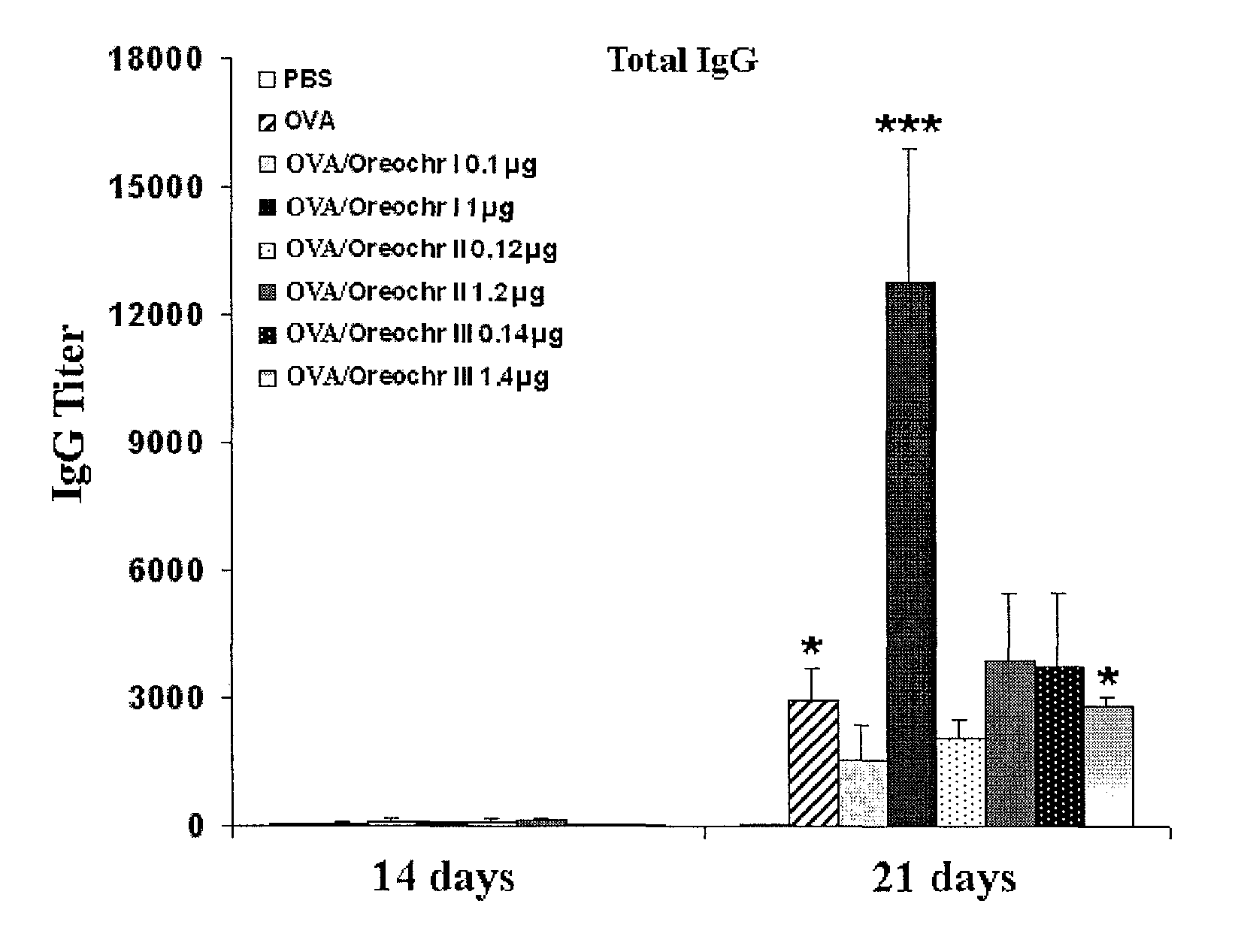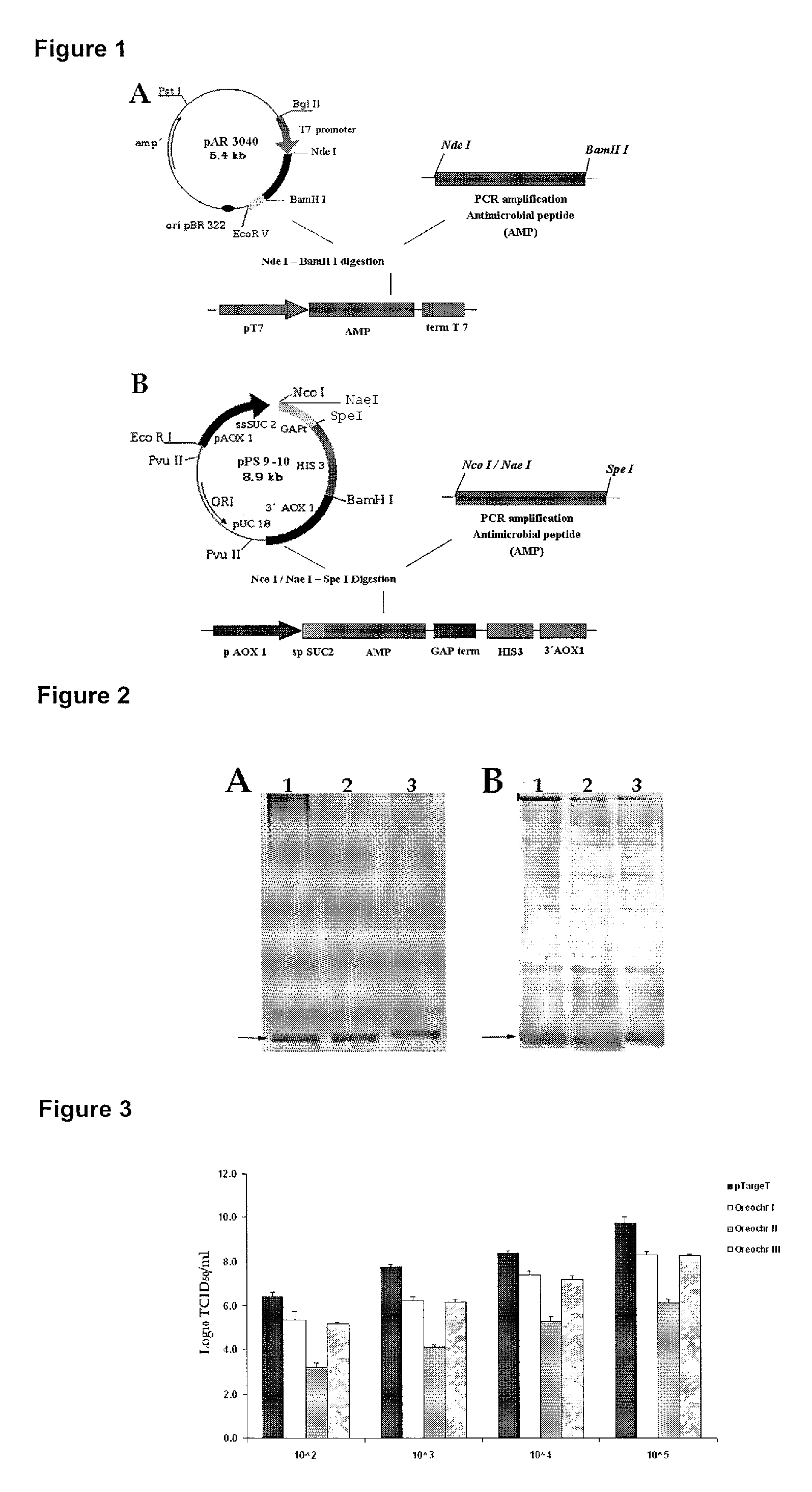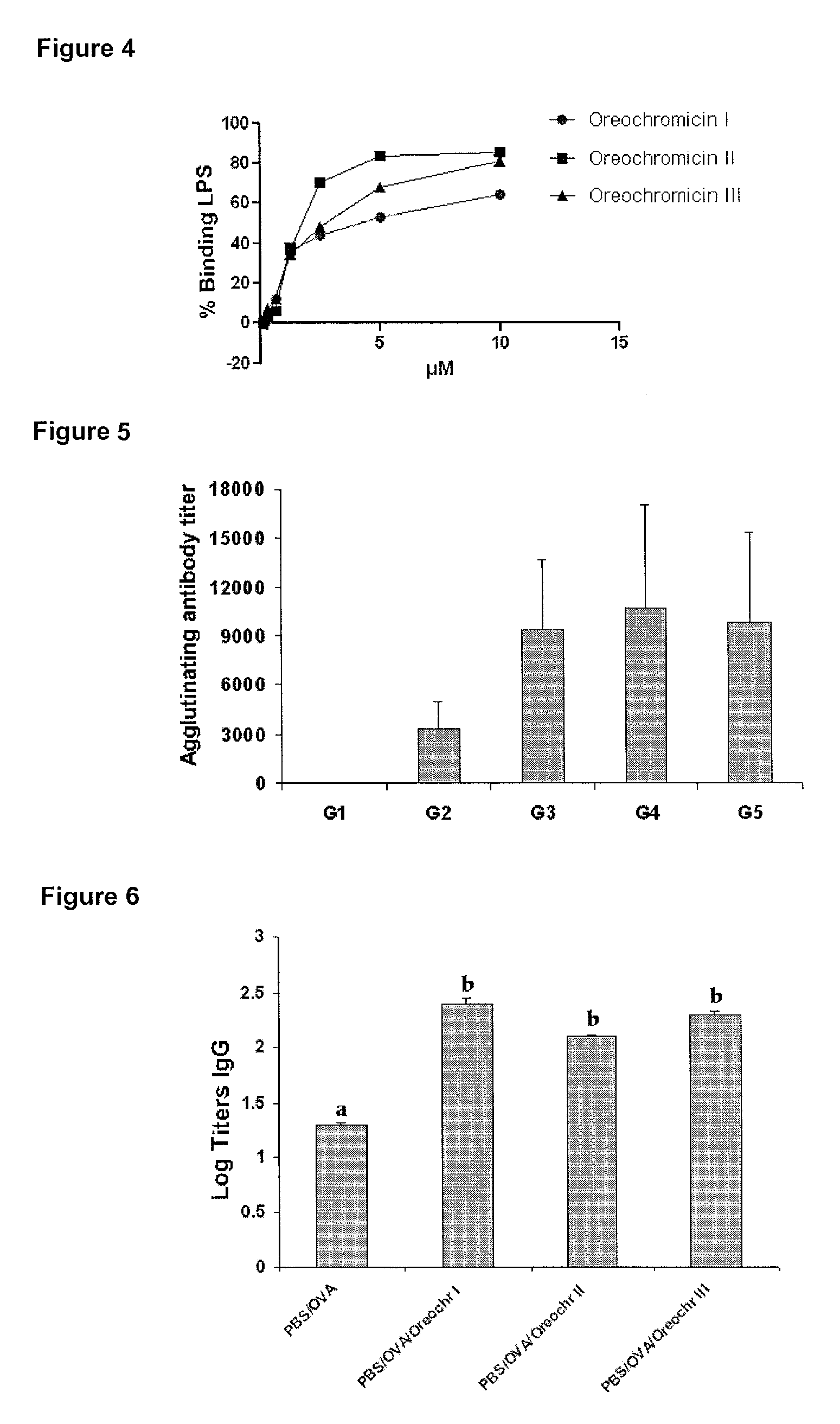Amino acid sequences for controlling pathogens
a technology of amino acid sequences and pathogens, applied in the field of biotechnology, can solve the problems of rapid destabilization/permeabilization of the pathogen lipid membrane, and achieve the effect of increasing the immune respons
- Summary
- Abstract
- Description
- Claims
- Application Information
AI Technical Summary
Benefits of technology
Problems solved by technology
Method used
Image
Examples
example 1
Isolation and Purification of the Antimicrobial Peptides from Tilapia Gills Extracts
[0031]Tilapia (Oreochromis niloticus) gill filaments were macerated in liquid nitrogen and the resulting powder was heated at 100° C. for 10 min and allowed to cool. The extraction of the proteins was performed by adding 150 mL of a solution of HCl 2M, formic acid 10% (v / v), NaCl 2% (w / v) and trichloroacetic acid 1% (v / v), followed by homogenization for 1-2 min. The homogenate was centrifuged at 20 000×g for 30 min, the supernatant was adjusted to pH 4.0 and filtered. The resulting filtrate was used as the acid extract and was applied to a Sep-Pak C18 column (Waters, Milford, Mass., USA). After washing with trifluoroacetic acid 0.1% (v / v), the fraction corresponding to peptides was eluted at 80% acetonitrile / 0.1% trifluoroacetic acid. The eluate was dried and dissolved in acetic acid 1M, and adsorbed to a matrix of SP-Sephadex C-25. Successive steps of elutions with acetic acid 1M, pyridine 2M and py...
example 2
Construction of Vectors for the Antimicrobial Peptide Expression, Intracellularly in E. coli and Extracellularly in Yeast P. pastoris
[0034]The complementary DNAs (cDNA) were obtained from ribonucleic acid (RNA) isolated from gills of tilapia (O. niloticus) by reverse-transcription reaction. The reactions were carried out following the instructions described in the kit “Reverse Transcription System” (Promega, USA). Briefly, 4 μg of total RNA were placed into a microcentrifuge tube free of nucleases and were incubated for 10 minutes at 70° C. Thereafter it was added the rest of the reaction components (4 μL of 25 mM MgCl2, 2 μL of the mixture of 10 mM deoxynucleotide triphosphates (dNTPs), 2 μL of reverse-transcription 10× buffer, 0.5 μL of ribonuclease inhibitor, 1 μL of oligo (dT) 500 μg / mL, 20 units of reverse-transcriptase and water previously treated with diethyl pyrocarbonate to a final volume of 20 μL). The reaction was incubated for 15 minutes at 42° C. and was stopped at 95°...
example 3
Purification and Biological Activity Assay of the Antimicrobial Peptides
[0041]Antimicrobial peptides recombinantly obtained were purified from E. coli rupture supernatant or from P. pastoris culture supernatant. First, the dialysis was performed in sodium acetate 25 mM (pH 4.5), using a membrane with a pore size of 1 kDa. The product of the dialysis was applied to a resin of cationic exchange CM-Sepharose Fast Flow equilibrated with sodium acetate 25 mM (pH 4.5), and proteins were eluted with sodium chloride 1M, Tris 50 mM (pH 7.6). The fractions containing the peptides were collected and concentrated using an ultrafiltration system using a membrane with a pore size of 1 kDa. For detection, we employed a wavelength of 254 nm. The purification was checked by Tricine-SDS-PAGE and proteins were visualized by Coomassie Blue staining (FIG. 2).
[0042]The peptides of the invention were also obtained by chemical synthesis using methods known to those skilled in this technical field. The anti...
PUM
| Property | Measurement | Unit |
|---|---|---|
| concentration | aaaaa | aaaaa |
| concentration | aaaaa | aaaaa |
| pH | aaaaa | aaaaa |
Abstract
Description
Claims
Application Information
 Login to View More
Login to View More - R&D
- Intellectual Property
- Life Sciences
- Materials
- Tech Scout
- Unparalleled Data Quality
- Higher Quality Content
- 60% Fewer Hallucinations
Browse by: Latest US Patents, China's latest patents, Technical Efficacy Thesaurus, Application Domain, Technology Topic, Popular Technical Reports.
© 2025 PatSnap. All rights reserved.Legal|Privacy policy|Modern Slavery Act Transparency Statement|Sitemap|About US| Contact US: help@patsnap.com



